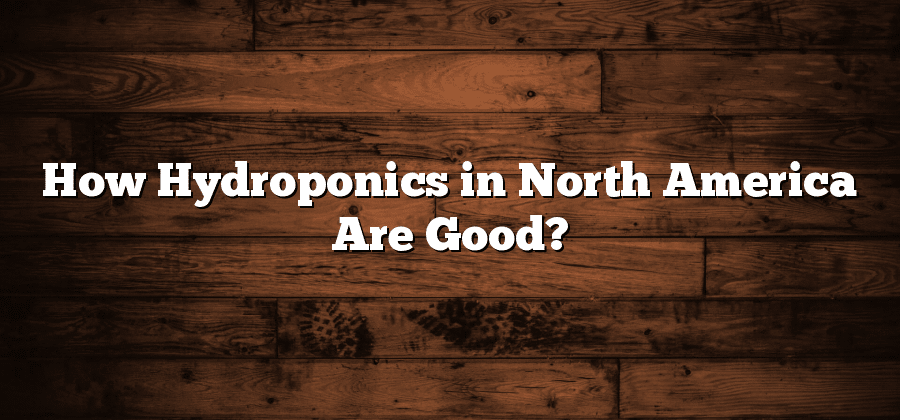Advantages of Hydroponics in North America
Hydroponics, a soil-less cultivation method, offers numerous advantages in the context of North America’s agricultural landscape. One key benefit lies in its ability to maximize space utilization, which is particularly valuable in regions with limited arable land. As hydroponic systems are designed to be stackable and compact, they enable farmers to grow crops vertically, making efficient use of vertical space. This vertical farming approach presents a promising solution for urban areas, where land scarcity is a prevalent issue. Additionally, hydroponics allows for precise control over nutrient levels and water usage, resulting in higher crop yields compared to traditional soil farming methods.
Another notable advantage of hydroponics in North America is its potential to mitigate the impacts of climate change on agriculture. With the increasing frequency and severity of extreme weather events such as droughts and floods, conventional farming practices are becoming more vulnerable. Hydroponics, on the other hand, offers a more resilient approach by reducing dependence on external environmental conditions. By providing a controlled environment where temperature, humidity, and light can be regulated, hydroponics minimizes the risks associated with unpredictable weather patterns. This not only ensures a more consistent and reliable crop production but also reduces the vulnerability of farmers to climate-related disruptions.
With its space-saving capabilities and climate resilience, hydroponics holds great promise for transforming North America’s agricultural sector. By adopting this sustainable farming method, farmers can maximize their productivity while minimizing their environmental impact. However, further research and investment are necessary to fully harness the potential of hydroponics and integrate it into mainstream agricultural practices.
Benefits of Hydroponic Farming
Hydroponic farming offers numerous benefits that make it an attractive option for farmers in North America. Firstly, it allows for the cultivation of crops without the need for traditional soil-based methods. Instead, plants are grown in a controlled environment where nutrients are delivered directly to their roots through water-based solutions. This eliminates the risk of soil-borne diseases and pests, resulting in healthier and more robust plants.
Secondly, hydroponic farming requires significantly less water compared to conventional farming methods. This is because water in a hydroponic system can be recycled and reused, minimizing water wastage. Additionally, the controlled environment allows for precise water management, ensuring that plants receive the exact amount of moisture they need for optimal growth. This is particularly advantageous in water-scarce regions or areas prone to drought, where traditional agriculture may be unsustainable.
Overall, the benefits of hydroponic farming make it a promising solution for enhancing crop yield and sustainability in North America. By eliminating soil-related challenges and optimizing resource usage, this innovative agricultural practice has the potential to revolutionize the way we grow food and feed a growing population.
Hydroponics: A Sustainable Agricultural Solution
Hydroponics is gaining recognition as a sustainable agricultural solution in North America and beyond. By growing plants in nutrient-rich water solutions instead of soil, hydroponics offers several significant advantages. Firstly, this method allows for greater control over environmental factors such as temperature, humidity, and light, enabling optimal plant growth. Additionally, hydroponics eliminates the need for large areas of arable land, making it a viable solution for urban areas or regions with limited access to cultivable soil.
Moreover, hydroponic farming has proven to enhance crop yield significantly. The controlled environment reduces the risk of nutrient deficiency and plant diseases, resulting in healthier, faster-growing plants. With precise nutrient monitoring and supplementation, farmers can maximize plant growth and mitigate the risk of crop failure. Furthermore, the absence of weeds in a hydroponic system eliminates competition for resources, allowing plants to focus their energy solely on growth and development. These advantages make hydroponics an attractive option for farmers looking to increase their productivity and profitability in a sustainable and efficient manner.
Enhancing Crop Yield with Hydroponics
Hydroponics is a modern agricultural method that is gaining popularity for its ability to enhance crop yield. By eliminating the need for soil and instead utilizing nutrient-rich water solutions, hydroponics offers several advantages over traditional farming techniques. Firstly, the controlled environment of hydroponic systems allows for optimal growing conditions, including temperature, lighting, and humidity, which promotes healthy plant growth. This eliminates the uncertainty caused by weather conditions and seasonal changes, leading to a consistent and reliable crop yield throughout the year.
Additionally, hydroponics enables farmers to maximize their use of space. Unlike traditional farming, which requires large areas of land, hydroponics allows for vertically stacked growing systems, making it possible to grow more plants in a smaller area. This is particularly beneficial in regions where land is scarce or expensive. Moreover, the absence of soil in hydroponics eliminates the risk of soil-borne diseases and pests, reducing the need for chemical pesticides and herbicides. This not only promotes environmentally friendly farming practices but also ensures that the crops are healthier and free from harmful residues.






